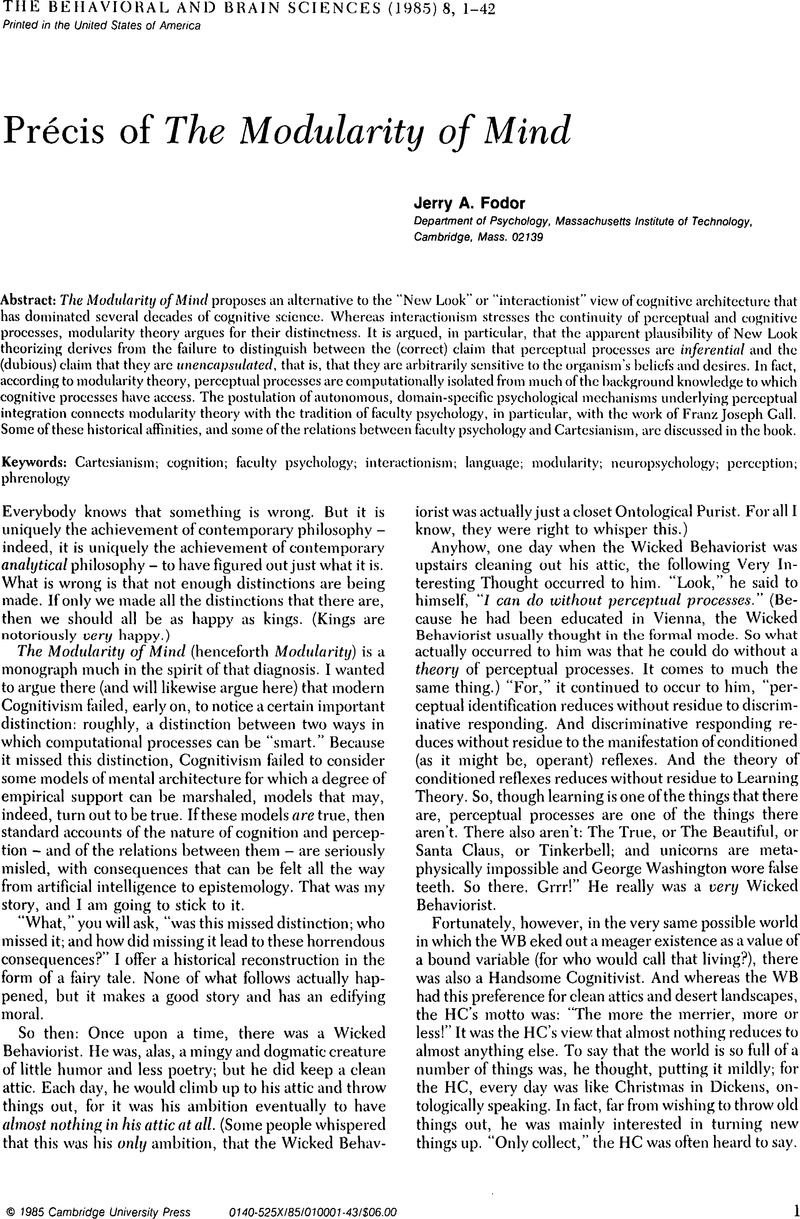Crossref Citations
This article has been cited by the following publications. This list is generated based on data provided by Crossref.
Bereiter, Carl
1990.
Aspects of an Educational Learning Theory.
Review of Educational Research,
Vol. 60,
Issue. 4,
p.
603.
Friederici, A. D.
1990.
On the properties of cognitive modules.
Psychological Research,
Vol. 52,
Issue. 2-3,
p.
175.
Meyering, T. C.
1994.
Fodor's modularity: A new name for an old dilemma.
Philosophical Psychology,
Vol. 7,
Issue. 1,
p.
39.



